Solar is simple compared to many technologies, but having a system installed does require learning about a few pieces of equipment. Let me de-mystify the components of a typical solar electric system.
| Component | Description | What It Looks Like |
|---|---|---|
| Solar Panels | 1. The most visible piece of your solar electric system is of course the solar panels on the roof (or ground mounted), which convert light energy into direct current (DC) electric energy. The main difference between the panels available today is their efficiency level. To learn more on that, see this blog post about panel efficiency . | 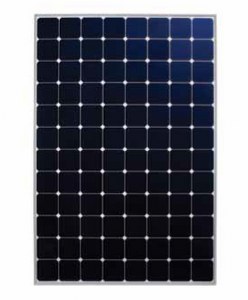 |
| Power Inverters | 2. Next we have the power inverter, which converts DC electricity produced by the panels into alternating current (AC) electricity you can use in your home or business. The most common types of inverter set-up are (a) central inverter/ power optimizer combo, and (b) micro-inverters. | |
| Central Inverter/ Power Optimizers | 2a. A central inverter system starts with power optimizers placed under each solar panel to optimize the production of each individual panel. Power optimizers send DC electricity from the panels to a central inverter, usually in the basement. The inverter converts the DC energy to AC electricity and voila, electricity! | 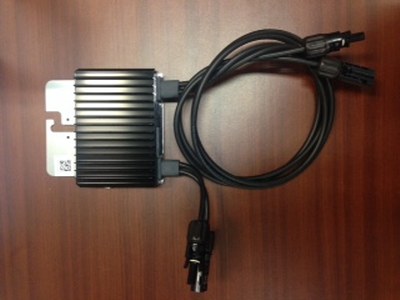 |
| Micro-Inverters | 2b. Like power optimizers, micro-inverters are connected to every solar panel in your system. But they convert DC electricity to AC while on the roof. Micro-inverters eliminate the need for a central inverter. | 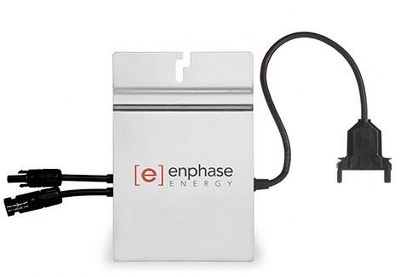 |
| Electrical Panel | 3. AC power from the inverter flows through the electrical panel — the one you’ve always had in your basement or garage. If your solar is producing more electricity than you’re using at a point in time, the extra either goes into the utility grid or into your battery back-up system for storage, if you have one. |  |
| Production Monitoring | 4. In the past, we installed a production meter near your inverter; some states considered that meter the most accurate measurement of your solar production, so it was used to calculate your green income or revenue (like SRECs in Massachusetts and REG payments in Rhode Island). Today, (a) central inverters and (b) the production monitoring hardware that comes with micro-inverter systems, are considered revenue grade. so the additional production meter isn't necessary. | |
| Revenue Grade Inverter | 4a. Revenue Grade Central Inverter | 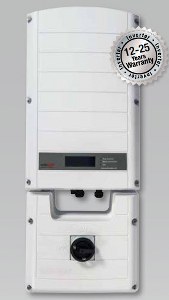 |
| Production Monitoring Hardware | 4b. Production Monitoring Hardware | 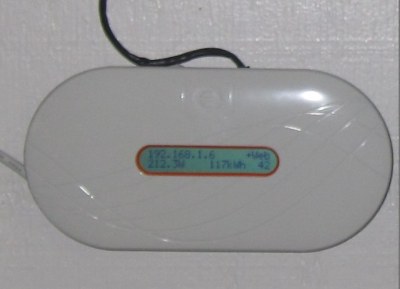 |
| Online Production Monitoring | 5. Most solar owners can monitor the amount of power their system is generating in real-time, online. Two small data over power line devices enable this by allowing the inverter to “talk” to the online monitoring system. One box is connected to the inverter and the other to your Internet router. Or, you can connect your inverter directly with an Ethernet cable or Bluetooth ® connection. This is called a direct connect. | 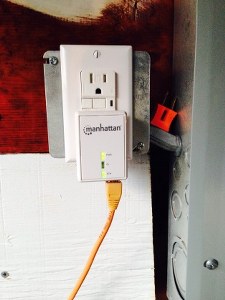 |
| Utility Meter | 6. Your utility meter, which displays your home’s power usage, is typically replaced by the utility after your panels are installed. Learn more about different types of utility meters used for solar here. | 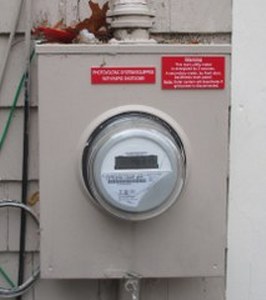 |
| AC Disconnect | 7. The AC Disconnect, required by utilities or local inspectors, is typically mounted outside near the utility meter. It is designed to rapidly shut down any power flowing from the solar inverter to the electrical grid. | 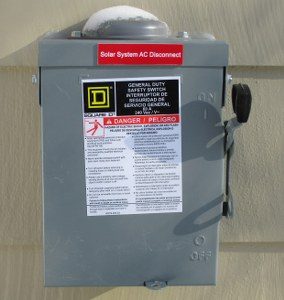 |
If you liked this article, you might also enjoy:


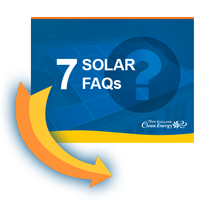 Download our 7 FAQs
Download our 7 FAQs


2 Responses to “Solar Systems Made Simple”
Back when I had panels put on, the panels were arranged in strings, and shade on any panel in the string meant the production of every panel was reduced to match. Does the use of optimizers mean we don’t have strings any more?
Jim, that’s correct. Optimizers are similar to (but not the same as) micro-inverters – they enable each panel to “work individually”.
The comments are closed.